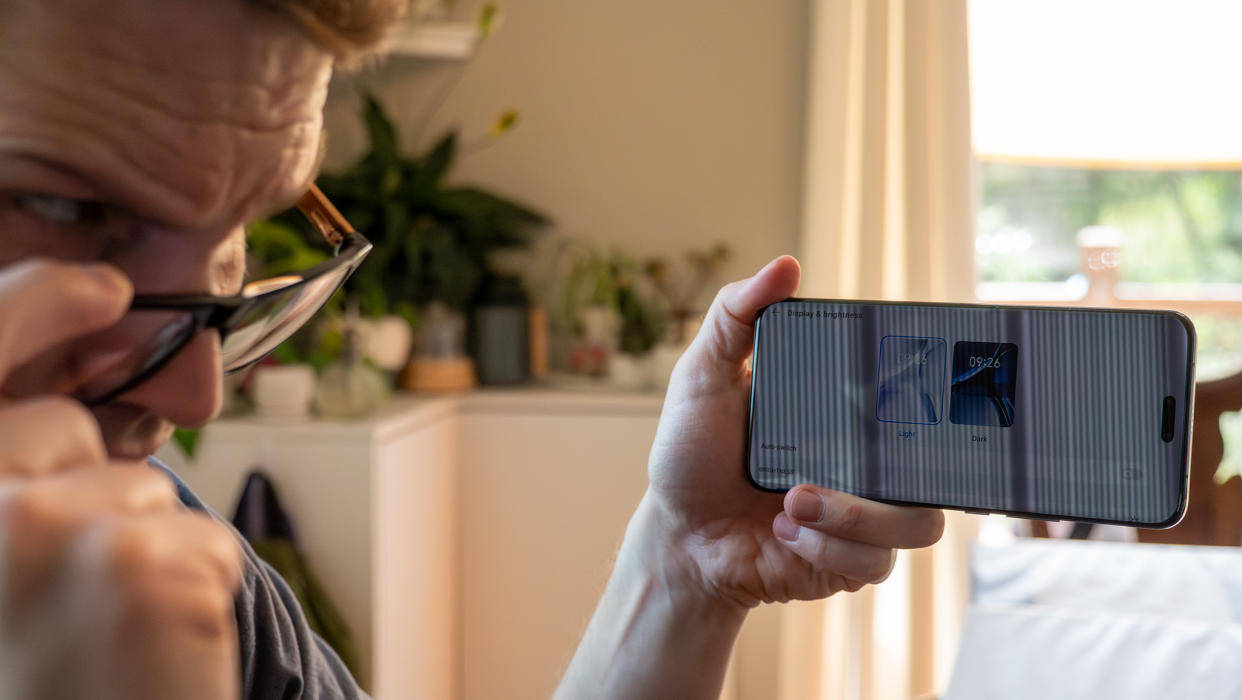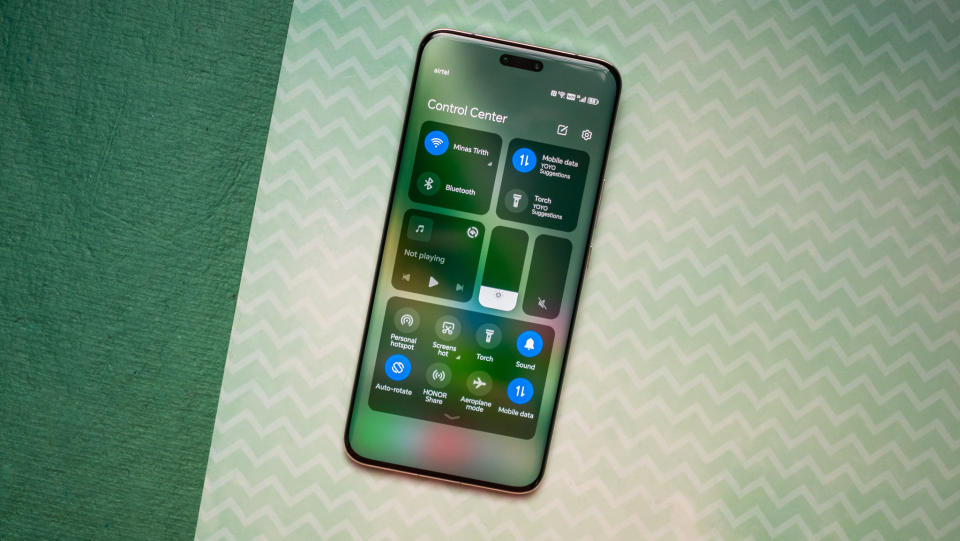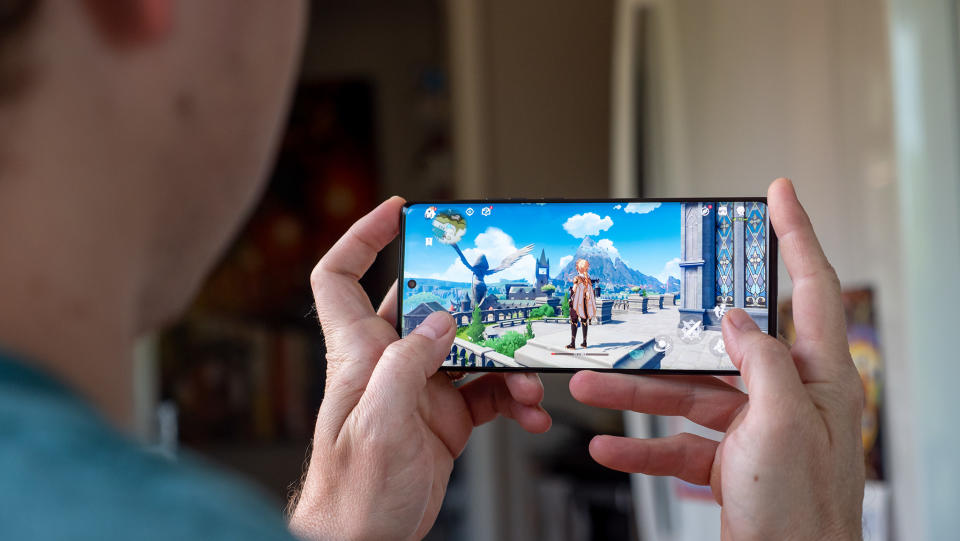Not enough people are talking about this phone's weird display

In the world of displays, it's often said that faster refresh rates are better. We've seen smartphones widely adopt 120Hz displays in the past few years, while the PC gaming side of things has seen monitors launch at 360Hz and beyond. But the refresh rate you see with your eyes isn't the only refresh rate you should care about.
The Honor Magic 6 Pro recently launched with a PWM refresh rate of 4,320Hz, eclipsing the previous record Honor set with the Honor 90 and Honor Magic 5 Pro last Summer. That number is becoming more and more important as ultra-bright phone displays are becoming more common, helping to alleviate eye strain when using these phones in bed at night.
But while an increasing number of companies are starting to advertise elevated PWM refresh rates, very few of them are willing to talk about the technology behind the glass. It's great to see attention paid to a topic that could affect millions of smartphone users, but it's also frustrating to see a lack of transparency from the companies behind the change movement.
Secrecy and proprietary methods

Industrial espionage is a term for a reason. Companies that develop complicated, profit-making products don't want to reveal their secrets to the rest of the world to be easily copied. That problem has accelerated tenfold in an era where products can be cloned on production lines and sold under a random brand name on Amazon.
In just the past two years, we've seen substantial competition in the display market from names like BOE, China Star, and Visionox, names you may have never even heard of until this article. Until these companies came along, an OLED panel on your favorite device was almost assuredly made by Samsung or LG.
However, Samsung's dominance in the AMOLED market meant that any decisions the company made ultimately trickled down to companies using Samsung displays in their products. As any PWM-sensitive person will tell you, Samsung AMOLED panels are the worst type of display for eye health.
Honor uses a BOE panel that gets to 5,000 nits brightness under the right conditions, yet it uses fascinating technology to ensure it's not searing your retinas.
Unironically, none of the best phones for PWM-sensitive people have displays made by Samsung. That's because some of Samsung's biggest features rely on flickering the display to trick your eyes into seeing something that's not actually there, and it wreaks havoc in some people's brains — including myself.
That's part of why I was so excited to get to use the Honor Magic 6 Pro, as its PWM rate is 10x the refresh rate of the Galaxy S24 series, ensuring that I'm able to use it for long periods of time.
While that's great — and it means I can finally use a phone with a comfortable display and a good camera — Honor's method of achieving this high rate is far from conventional. In short, that means it doesn't work for everyone.
Without getting into the weeds, my light meter can't properly read the backlight refresh frequency of the Honor Magic 6 Pro's display, even though I can see what's happening with a camera. It's a side effect of Honor doing something "weird" with its display, so I asked the company to go into a bit more detail on it.
Honor's display panel works differently from any other I've tested, and while that works well for me, it doesn't for some folks.
Unfortunately, all I was met with was a disappointing "sorry, we can't provide further details on this technology."
This makes it difficult to understand why this phone works incredibly well for my eyes but instantly causes pain for other flicker-sensitive users. It's a problem I've had with other companies, like Google and Samsung, who both have refused to comment or provide additional details on how their displays work beyond what each company's marketing department provides.
Meanwhile, Motorola continues to be one of the only companies that will discuss the topic at length with me. They even boasted how their flicker-reduction technology ensures that the display is on 99.51% of each duty cycle, a more technical term I've never heard from any other company.

Motorola is one of the only companies talking about how it actively performs market research to find out how much of its customer base is negatively affected by display flicker.
Motorola has even disclosed to me that it performs market research studies specific to display flicker in an attempt to figure out how many Motorola customers are negatively affected by flicker.
This is the kind of market-leading behavior I expect from a company like Samsung that could potentially negatively affect the health of hundreds of millions of people around the world. It's just as important as ensuring that phones don't emit harmful radiation, something all manufacturers have to do before getting approval by governing bodies like the FCC.
Thankfully, I was able to sit down with Bill Maffucci from Kopin Corporation, a company that specializes in creating displays and lenses for XR devices, to discuss some of the finer points of how displays work. It was a refreshing conversation and it helped me understand the tenuous relationship between technologies like PWM and LTPO.
Technologies like PWM and LTPO complicate the already complicated nature of OLED panels, and companies aren't particularly willing to divulge how these work together.
Maffucci explained that an OLED display can light up and turn off in microseconds — one microsecond is one millionth (0.000001) of a second — meaning that companies now have options for dimming that they never had with LCDs. Couple that with the fact that reducing voltage on an OLED panel too much can cause bad color reproduction and noise, and you'll quickly understand why companies have started using PWM — which flickers the display on and off rapidly — more often to control brightness.
However, this becomes even more complicated when you throw LTPO into the mix, a technology that adjusts the refresh rate of the display based on what's happening on screen. But while this sounds like it would interfere with the "backlight" cycle on an OLED, Maffucci confirmed to me that most LTPO OLEDs don't actually adjust the refresh rate of the display itself.
Rather, what's being adjusted is the graphics driver's rendering rate, and it's usually performed at a number that divides evenly into the display's actual refresh rate. For Honor, that means the 360Hz rate further complicates the situation in ways the company isn't willing to divulge.

I've noticed that more people than ever are flocking to PWM-sensitive online communities, and I think it's both a combination of more flickering displays than ever plus people's raised awareness that this is a real issue — not just something in their imagination.
Even Google is playing around with new brightness controls at the system level, purportedly baking in a new "even dimmer" option into Android 15. While that could help some people, the existing "extra dim" option in Android seems to wreak havoc on sensitive eyes.
However, the trend for more eye-friendly mobile displays has substantially improved over the past year. Companies like Motorola are leading the way, but display manufacturers like BOE, Visionox, and China Star all seem to recognize that something needs to change to prevent more widespread problems from happening.
Now, if we could only get companies to be a little less secretive about things that are problematic to their users' health, that would be great. Regardless, I'm happy to see companies like Honor trying to make better displays, even if the company doesn't want to reveal its secrets just yet.

